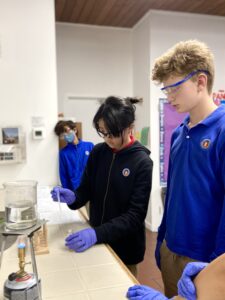E-School News – Julia Freeland Fisher
 2022 marked a confusing year in the world of education innovation. As a friend and school leader said to me a few months ago, “Innovation is dead, right?”
2022 marked a confusing year in the world of education innovation. As a friend and school leader said to me a few months ago, “Innovation is dead, right?”
She was half joking while perfectly summing up something in the air last year in schools: a pandemic hangover mixed with ongoing, day-to-day challenges of running complex systems. Together, these made many “new” approaches to education feel too overwhelming to even entertain.
Lurking behind that, a surreal dynamic was unfolding across both K-12 and higher education: as emergency closures subsided, schools quickly regressed to their pre-pandemic approaches, despite new or worsening challenges at their doorstep. That re-entrenchment makes good sense given the resilience of traditional business models. Yet, it doesn’t match up with new realities like stark learning gaps, worsening mental health crises, significant enrollment declines, and a cooling job market. Business as usual is a rational response for a taxed and weary education system, but it’s also risky in light of all the ways the world has changed.
